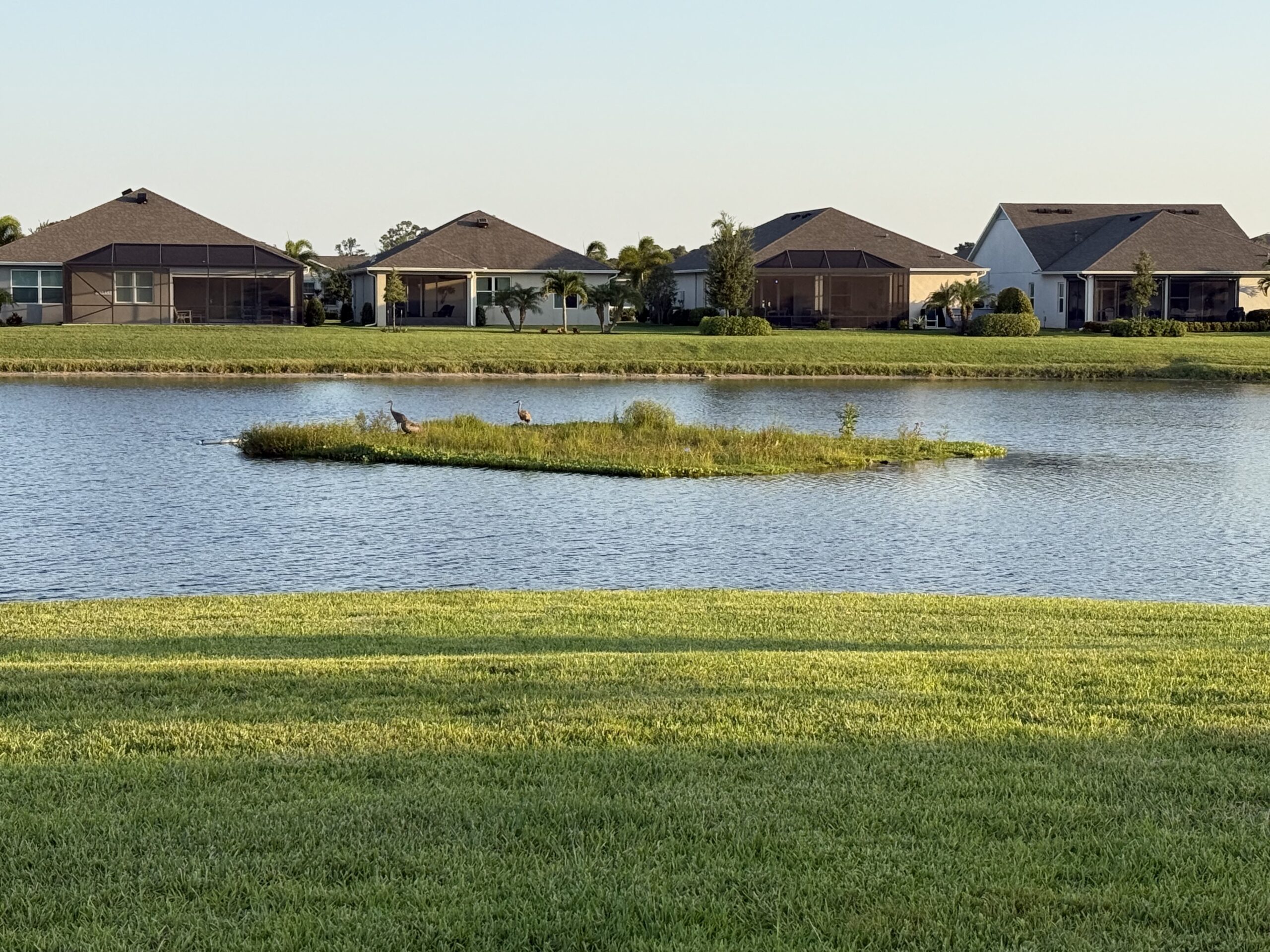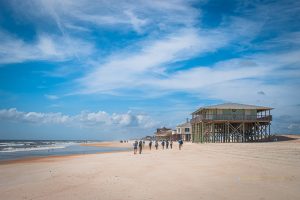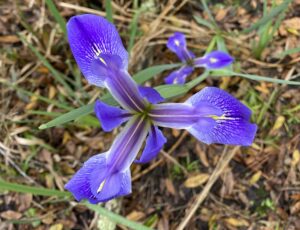Pale Blue Dot Consulting recently completed the updated University of Florida SQUINT (Stormwater Quality Unit Inspection Training). This included training on monitoring and inspecting stormwater ponds, swales, and structures related to ERPs, NPDES, and MS4 permits, with a new focus on Green Stormwater Infrastructure (GSI) and Low Impact Development (LID). This new focus on Green Stormwater Infrastructure comes at a time when GSI is anticipated to quickly increase in popularity to help engineers and developers manage FDEP’s new nutrient load reduction requirements. As such, we decided now would be a great opportunity to dive deeper into types of GSI and the importance of properly planning, maintaining, and monitoring GSI.
What is the FDEP rule on nutrient load reduction?
Florida is home to a wealth of delicate aquatic ecosystems, including springs, wetlands, and estuaries, that face mounting pressures from nutrient pollution tied to development and urban stormwater runoff. When this polluted water enters rivers, lakes and coastal waters it fuels harmful algal blooms, degrades aquatic habitat, and imperils the quality of life Floridians expect. In response, the Legislature enacted Senate Bill 712, known as the Clean Waterways Act, directing the Florida Department of Environmental Protection to update stormwater permitting and design standards to ensure significant reductions in nitrogen and phosphorus loads across the state. This rulemaking, now incorporated into Florida Administrative Code Chapter 62‑330 and its Applicant’s Handbook, requires that new stormwater systems achieve post‑development nutrient loads no greater than pre‑development conditions, typically delivering at least 55 percent reduction in total nitrogen (TN) and 80 percent reduction in total phosphorus (TP) (in impaired watersheds) and upwards of 80 percent reduction of TN and 90 percent reduction of TP in Outstanding Florida Waters (OFWs). The new standards also eliminate presumptive BMP designs in favor of site‑specific modeling, and establish requirements for long‑term maintenance, inspections, and financial capability certification.
How will engineers and planners accomplish these nutrient load reductions?
First, these new nutrient load reduction requirements will likely reduce the area that can be developed into impervious surfaces (i.e. buildings or pavements) and will likely increase the area required for stormwater retention and treatment. Reducing impervious surfaces and increasing treatment and storage capacity will improve nutrient load reductions – but engineers and planners running models are quite aware that this oversimplified math problem will not be enough to reach the 80-90% reductions required by permits.
One exciting way that developers will reach permitted nutrient load reduction requirements is the development of Water Quality Enhancement Areas (WQEAs) and the purchasing of WQEA credits (similar to offsetting wetland impacts through wetland mitigation banks and credits). However, the discussion of WQEAs deserves its own post, and none have yet been developed, so we will save that discussion for another time in the near future.
The more immediate method to solving (at least part of) the nutrient load reduction requirements will be implementing Green Stormwater Infrastructure into plans in the initial planning phases. Adding bioswales, bioretention ponds, floating wetlands, planted littoral shelves, and other GSI Best Management Practices (GIBMPs) will likely become a necessity when designing new commercial and residential developments. Through the power of plants and, in some cases, engineered soils, GIBMPs will help treat stormwater and remove nutrients before percolating into groundwater, evaporating, or being discharged from the site. By embedding living systems into development design, GSI delivers nutrient reductions and pollutant capture, while amplifying biodiversity, cooling landscapes, enhancing community amenity, and even boosting property values.
Types of Green Stormwater Infrastructure
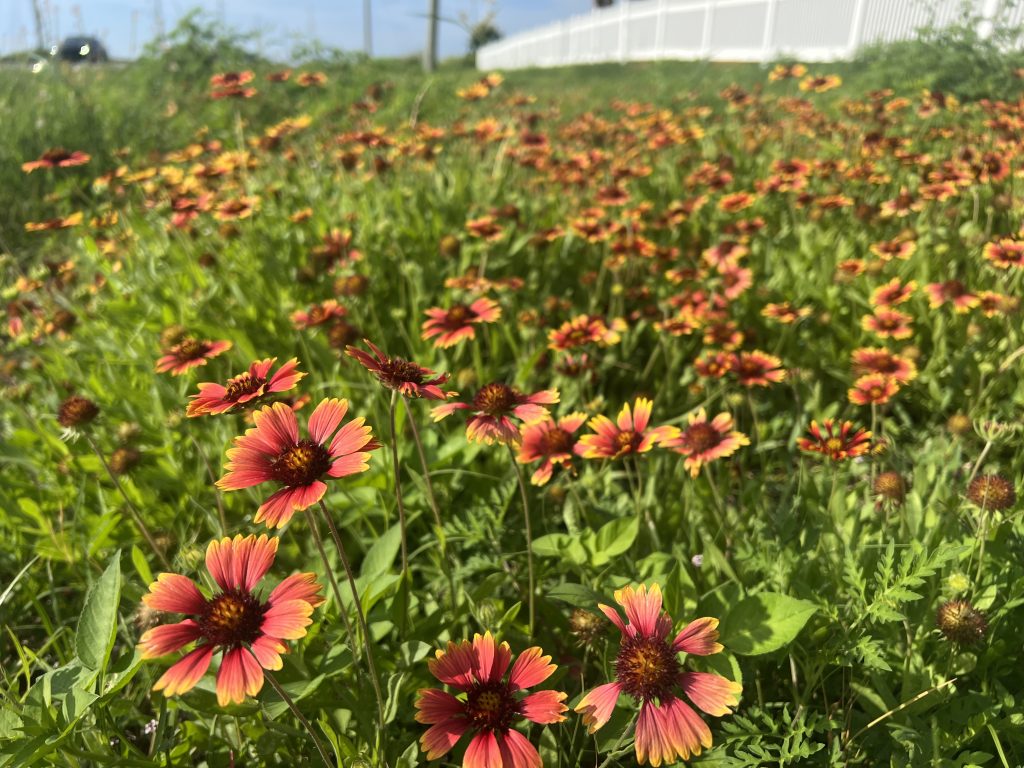
Bioswales
Bioswales are shallow, vegetated channels planted with native marsh or wetland grasses. Picture a roadway or parking lot lined with small ditches with cypress, hollies, elms, maples, flowering plants, and grasses (instead of boring, typical, nonnative sod grasses). These bioswales slow runoff, let it infiltrate slowly into soil, trap sediment, and uptake nitrogen and phosphorus before it ever reaches storm drains, and often include engineered soils increasing nutrient reductions.
Bioretention cells
Bioretention cells are essentially rain gardens tucked into neighborhoods, commercial sites, or parks, that settle out stormwater in engineered soils and plant roots, passively treat pollutants, and return clean water back into ground or convey it to downstream systems. These could be more associated with replacing dry retention systems, as they may include more drought tolerant plants than a wet retention/stormwater pond.
Both practices will likely be combined with engineered soils to maximize nitrogen and phosphorous load reductions – and multiple companies have created successful, scientifically tested engineered soils that are proven to remove substantial loads of nitrogen and phosphorus. However, these engineered soils have a lifespan/maximum capacity of adsorption of such nutrients and must receive maintenance. This means these systems must be monitored periodically by qualified inspectors and, when their lifespan is nearing its end, these soils can be harvested and replaced with fresh, new soil; harvested soils can often be converted into fertilizer since they are extremely phosphorous and nitrogen dense!
Floating Wetlands
Floating wetlands are constructed mats planted with emergent wetland species floating in retention ponds or lakes. These provide another GSI option particularly suited to Florida’s numerous waterbodies and can be retrofitted onto existing ponds in HOAs and CDDs. These systems take up nutrients directly from the water column, support microbial communities that further break down pollution, and create habitat surface structure for fish, amphibians and birds. Similar to engineered soils, the vegetation on these wetlands must be harvested from time to time. As plants are growing, they are sucking out nutrients from the water; when plants die, either from reaching the end of their life cycle or from dying back in cold months, they release nutrients back into the water, thus undoing all their hard work (and now jeopardizing the system’s permitted design function).
Littoral Shelves
A littoral shelf is the gently sloping terraces along pond/lake edges that are vegetated with native aquatic plants. These provide natural nutrient uptake, sediment stabilization, and wildlife habitat while attenuating wave energy and reducing shoreline erosion. Like floating wetlands, these can be included in stormwater pond design at the initial planning stage or can be retrofitted to existing ponds. While our focus is on nutrient load reductions, littoral shelves (and floating wetlands) are one of the best ways to improve habitat for pollinators, birds, and fish for communities. Unlike floating wetlands, however, littoral shelves are typically not designed to be harvested, but these systems should also be monitored regularly to ensure invasive plant species don’t take over a functioning ecosystem; if invasive species do take over, harvesting these plants could be an important tool for removing unwanted vegetation without the use of chemical herbicides while also removing some nutrients from waterbodies.
Green Roofs
Green roofs are roofs covered with soil and drought‑tolerant vegetation – these are typically designed in the planning stages and are much more difficult to retrofit existing buildings (but it can be done). Green roofs absorb rainfall, reduce the volume and velocity of runoff, and lightly scrub incoming pollutants. One could add vegetable gardens or pergolas covered with native flowering vines for added function and diversity.
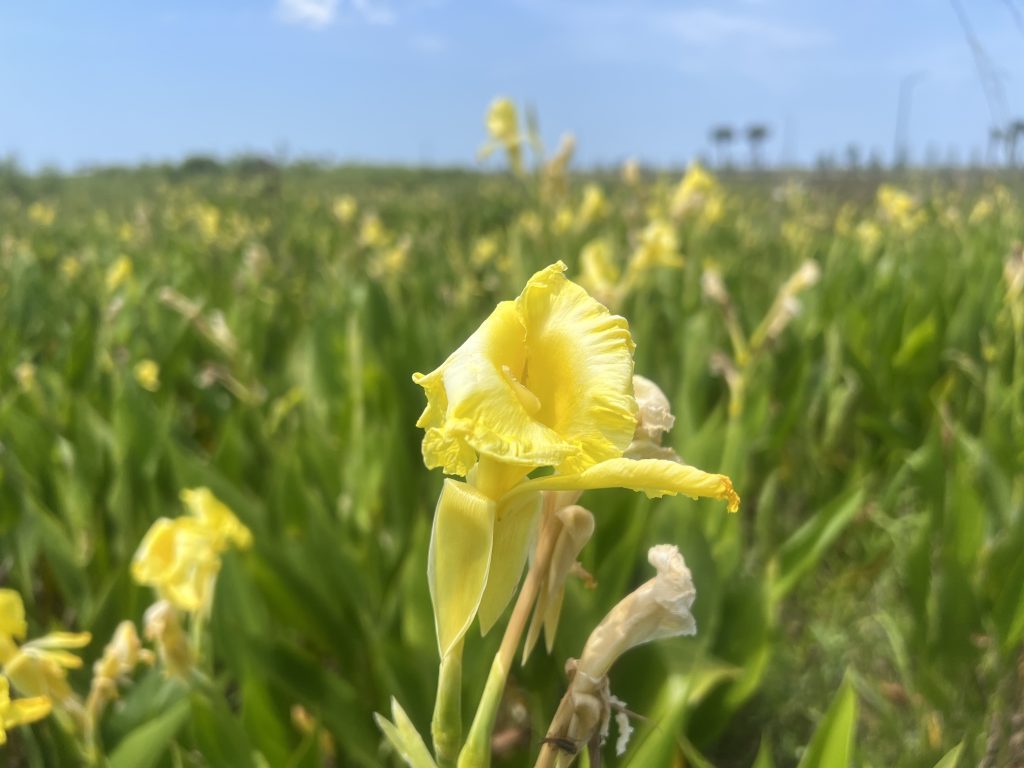
Permeable Pavement
Permeable pavement, whether pavers, asphalt or concrete systems, allows rain to infiltrate beneath plazas, parking lots, driveways, and walkways into underlying layers designed to treat and soak water rather than send it directly into pipes. All of these systems are easily modeled to meet or exceed the Clean Waterways Act’s performance criteria, reducing both TP and TN loads.
Beyond regulatory compliance, GSI delivers a suite of ecosystem services that ripple beyond water quality benefits. Vegetated systems create habitat corridors for pollinators and birds, and support aquatic macroinvertebrates that anchor healthy ecological communities. Floating wetlands and littoral shelves enrich habitat complexity in ponds and lakes. Green roofs, when planted with pollinator‑friendly species, add urban biodiversity on buildings otherwise devoid of life. These living elements support native vegetation and wildlife, contributing measurable gains in biodiversity and ecological resilience.
Temperatures are reduced across multiple scales: green roofs buffer building heat gain, lowering urban heat island impacts; shaded bioretention and bioswales cool surrounding pavement and community areas; and ponds with floating wetlands retain cooler water and moderate local micro‑climates. Outdoor thermal comfort improves in parks, trails, and plazas integrated with GSI. Meanwhile, property values tend to increase where visible, well‑integrated green infrastructure is present – studies show proximity to green stormwater systems, natural wetlands, and vegetated open spaces correlates with higher real estate demand, rental rates, and long‑term market value.
GSI can even be designed as recreational features within developments (please, developer/engineers, let’s design more of this). A bioretention garden in a residential development can double as a pocket park or contemplative garden and gathering space, with benches along its edge and native wildflower plantings that support seasonal interest and pollinators. Floating wetlands might be incorporated into central retention ponds in office parks or multi‑family communities, with boardwalks or kayak access for recreation and education. Permeable plazas shaded by trees above underground infiltration have a lawn‑like feel, casual seating, bike racks, inviting residents or customers to linger. Green roofs on community centers or schools can be installed as accessible spaces with walkable surfaces, seating, even small vegetable plots or classrooms perched above, combining stormwater capture with usable garden space.
Importantly, protecting and preserving existing natural wetlands (rather than bulldozing them or filling them for development) acts as one of the most effective forms of GSI. Florida’s wetlands naturally absorb stormwater volumes, manage floods, filter out nutrients, recharge aquifers, and provide habitat. When development is redesigned to avoid wetlands, those systems remain intact and continue functioning to intercept overland flow, hold excess stormwater during heavy rainfall, moderate peak flows, and provide the full range of ecosystem services GSI seeks to mimic. In effect, the protection of existing wetlands can double as stormwater and flood control infrastructure while supporting biodiversity, carbon sequestration, and water storage.
Because Florida’s new rules allow and anticipate the use of innovative or alternative BMPs, GSI fits naturally into permit applications under Chapter 62‑330. Applicants must demonstrate through modeling that post‑development nutrient loads meet the Clean Waterways Act criteria; GSI generally enhances both the quality and quantity handling functions of stormwater, facilitating those outcomes. Long‑term operation and maintenance plans, financial capability certifications, and inspection protocols required by the rule also dovetail with treating GSI as designed landscapes—not merely buried pipes—which require stewardship and routine upkeep.
At the community scale, well designed GSI systems foster environmental education and sense of place, turning stormwater ponds or vegetated swales into visible infrastructure that residents experience daily. Interpretive signage can explain how a bioswale filters runoff and supports wildlife, floating wetlands may label plant species and their water‑filtration function, and green roofs can host classes in sustainable design and urban ecology. GSI thus becomes part of place‑making and civic pride, rather than hidden or buried.
As Florida moves into full implementation of the updated stormwater design and operation rules, innovative GSI offers a clear path forward. It assists with achieving nutrient performance standards, supports inspection and maintenance regimes, and enhances communities with living systems that thrive. Whether in redevelopment or new development, integrating bioswales, bioretention, floating wetlands, planted littoral shelves, green roofs, permeable pavement, or simply preserving existing wetlands brings together water quality regulation and ecological vitality in a holistic, community‑enhancing way.
Pale Blue Dot Consulting is ready to support the successful implementation and long-term performance of Green Stormwater Infrastructure through detailed planting plans and ongoing evaluation. With a Professional Wetland Scientist, ISA Certified Arborist, and experienced botanists on staff, we bring ecological expertise that ensures plant selections are not only aesthetically appropriate but functionally effective for nutrient uptake, habitat enhancement, and resilience under Florida’s hydrologic conditions. Our team has also completed the University of Florida’s SQUINT (Stormwater Quality Unit Inspection Training), equipping us to assess structural and vegetative components of GSI systems and document their condition over time. We assist clients from design through post-construction by developing native, site-specific planting palettes, overseeing installation, and conducting follow-up inspections and vegetation performance monitoring to ensure systems meet regulatory expectations and maintain their ecological and stormwater treatment functions.
